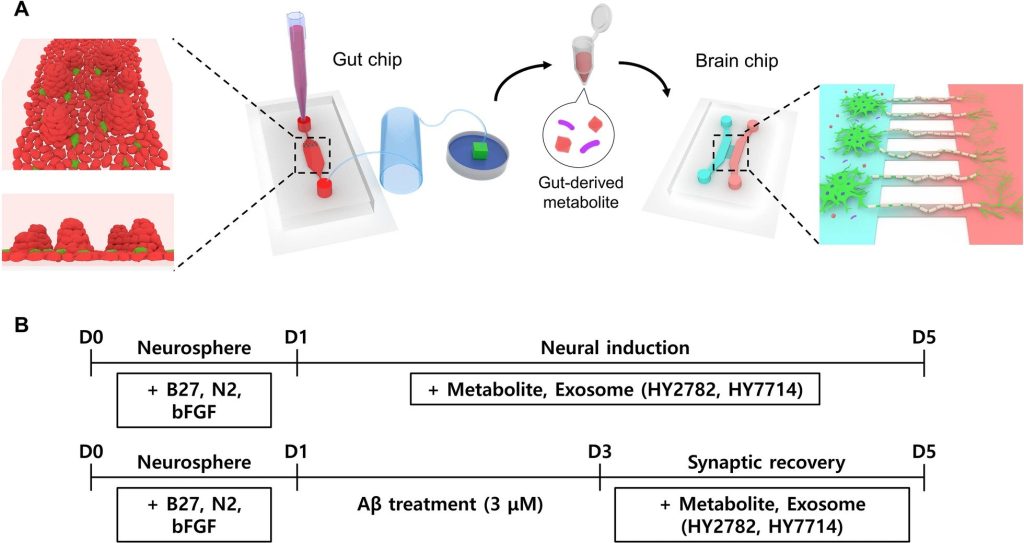Impact of Gut Microbiota-Derived EVs & Metabolites on Neurodegenerative Diseases

Effect of gut microbiota-derived metabolites and extracellular vesicles on neurodegenerative disease in a gut-brain axis chip
A recent study led by Bong Geun Chung from Sogang University in Seoul, Korea, explored the role of gut microbiota-derived metabolites and extracellular vesicles (EVs) in neurodegenerative diseases. These substances are part of the dynamic bidirectional communication system known as the microbiome-gut-brain axis, which connects the gut, its microbiome, and the central nervous system (CNS).
Metabolites and EVs from gut microbes have the ability to traverse barriers like the intestinal epithelial barrier or blood-brain barrier, impacting the CNS directly or indirectly. However, understanding the causal effects of these substances on neurogenesis and neurodegenerative diseases requires reliable research tools.
To address this, the researchers utilized microfluidics to create an advanced in vitro model called the gut-brain axis chip. Using human induced pluripotent stem cell-derived neurons, they investigated the effects of microbial-derived metabolites and EVs on neurodevelopment and neurodegenerative disorders.
Their findings, although strain-specific, suggest that both metabolites and EVs from microbes significantly influence neural growth, maturation, and synaptic plasticity. These results hint at the potential of gut microbiota-derived substances as candidates for addressing neurodevelopmental and neurodegenerative disorders.
This study sheds light on the intricate relationship between gut microbiota-derived substances and neurodegenerative diseases, offering insights into potential therapeutic strategies for addressing these conditions.
Figure Description:
A Schematic of the experimental setup for a gut-brain axis chip system. The gut chip used human epithelial Caco-2 cells to establish an intestinal lumen, while the brain chip with bridge microchannels guided the axonal growth of neurons. B The upper scheme illustrates the differentiation of neural cells from human iNSCs, while the lower scheme depicts the induction of an Alzheimer’s disease model
Photo Credits: Kim, N.Y., Lee, H.Y., Choi, Y.Y. et al. Nano Convergence 11, 7 (2024)